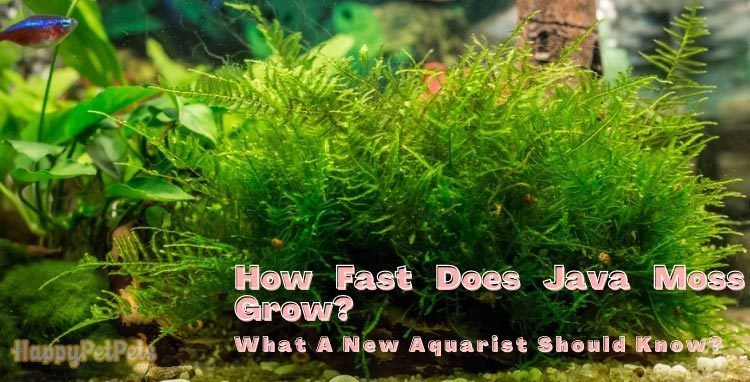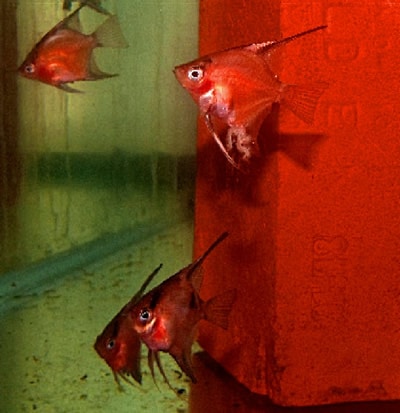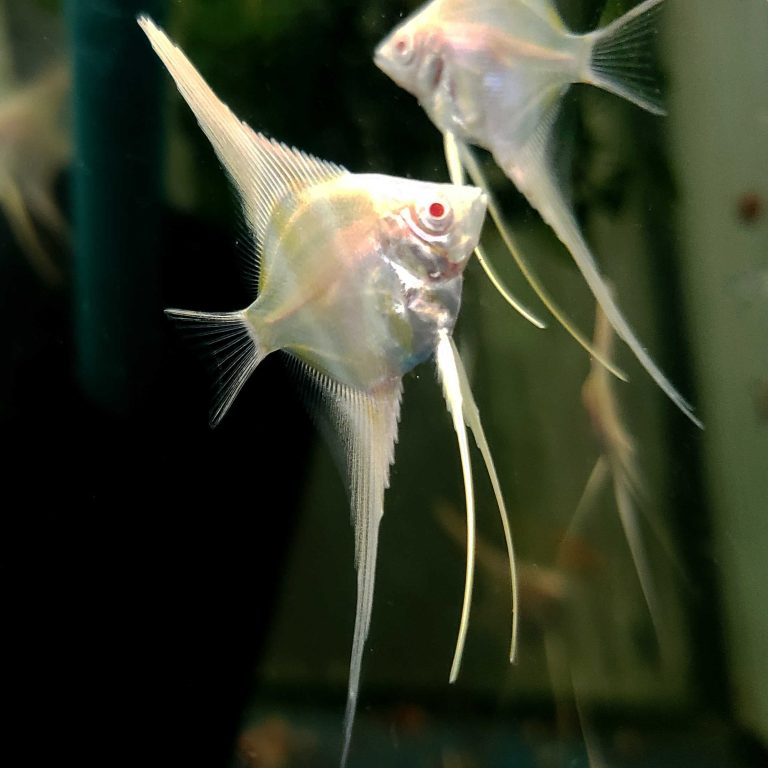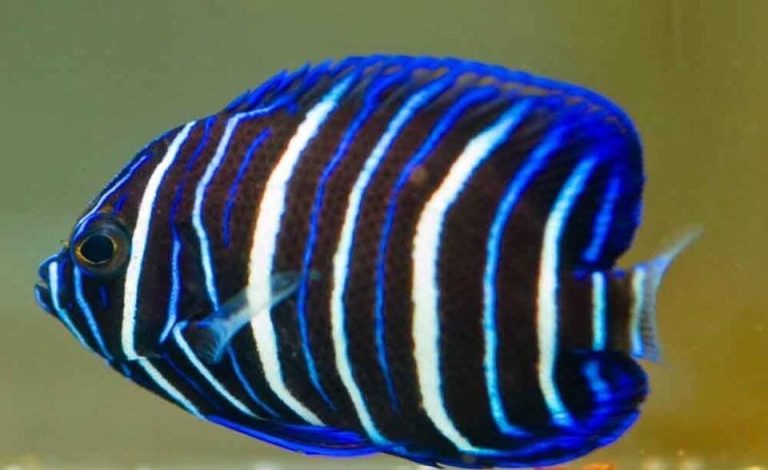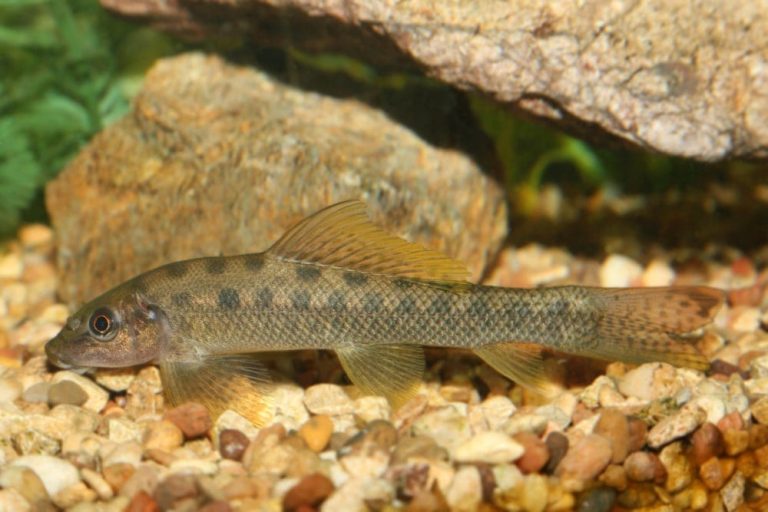How Fast Does Java Moss Grow? Discover Its Amazing Growth Rate
Java moss can grow up to 1 inch in length per month in the optimal conditions. Java moss, scientifically named taxiphyllum barbieri, is one of the most popular plants for aquariums or terrariums due to its low maintenance requirements and beautiful appearance.
Java moss can be used for both decorative and functional purposes. It is often used by hobbyists to create lush, natural-looking aquascapes in their aquariums or vivariums. Additionally, java moss is known for its ability to absorb nutrients and harmful substances from the water, making it a useful tool in improving the water quality of your tank.
When java moss has the right conditions, it can grow quickly and thrive, producing oxygen and providing a source of food and shelter for your aquatic creatures. However, it is important to keep in mind that excessive growth of moss can result in overcrowding, which can have negative effects on the health of your tank ecosystem. Therefore, proper maintenance and pruning are necessary to keep the growth of your java moss under control and maintain a healthy aquatic environment.

Credit: aquariumbreeder.com
What Is Java Moss?
Java moss is a popular aquatic plant that is often used in aquariums due to its hardiness and easy-to-maintain nature. This plant is native to southeast asia and is also known as taxiphyllum barbieri. Java moss has a reputation for being one of the fastest-growing aquatic plants available, making it an ideal choice for many aquarium enthusiasts.
Overview Of Java Moss
Java moss is a hardy, green aquatic plant that can be grown in a wide range of water conditions. This plant is small and intricate, with a branching growth pattern and delicate leaves. Some of the key things to know about java moss are:
- It’s an excellent plant for beginners, as it is easy to care for and maintain.
- It’s incredibly versatile, as it can grow in a wide range of water conditions, including low-light and high-nutrient environments.
- It’s an excellent choice for creating habitats and hiding spots for aquatic creatures, as it’s a great plant to attach to rocks, driftwood, or other aquarium décor.
Physical Characteristics
The physical characteristics of java moss make it unique and well-suited to life in an aquarium. Some of the key things to know about this plant’s physical characteristics are:
- It’s a low-lying plant that typically grows to no more than 2 inches tall.
- It has small, needle-like leaves that can vary in color from dark to light green.
- It has a branching growth pattern that creates a tangled, intricate appearance.
- It contains no true roots but instead uses rhizoids to attach to surfaces and absorb nutrients directly from the water.
- It’s capable of propagating quickly, making it an excellent choice for adding to aquariums with many habitats.
Java moss is an excellent aquatic plant that can help to create a healthy ecosystem in your aquarium. Whether you’re a beginner or an experienced aquarium enthusiast, this plant is easy to grow, maintain, and propagate. With its versatility and hardiness, it’s no wonder that java moss is such a commonly chosen plant for aquariums.
Factors Affecting The Growth Of Java Moss
Java moss is a popular aquatic plant among hobbyists who keep freshwater aquariums. This plant is highly versatile and can grow in a wide range of water conditions. But, how fast does java moss grow? The growth rate of java moss depends on several factors.
Let’s explore them one by one.
Water Quality Factors
The quality of water is crucial for the growth of java moss. Here are the key points to keep in mind:
- Java moss prefers a slightly acidic to neutral water ph level, ranging from 5.5 to 7.5.
- Hard water can cause the plant to grow slower, while soft water can promote faster growth.
- High levels of nitrate and phosphate can promote quicker growth, but an excess of these nutrients can lead to algae growth and harm the moss.
Light Intensity
Light is essential for photosynthesis, the process of converting light energy into chemical energy, which fuels the plant’s growth. Here’s what you need to know:
- Moderate to low light intensity is ideal for java moss growth.
- Avoid direct sunlight, which can cause the plant to develop brown spots and die.
- The recommended lighting period is 8-10 hours per day.
Temperature
Java moss can adapt to a wide range of temperatures, but some temperatures are more optimal for growth. Consider these factors:
- The ideal temperature range for java moss to thrive is between 70°f to 75°f.
- Warmer temperatures (above 80°f) can cause the plant to grow faster but also increase the risk of algae growth and require more maintenance.
- Avoid colder temperatures (below 60°f), which can stunt the growth of the moss.
Nutrient Availability
Java moss requires nutrients to fuel its growth. Here are the essential nutrients to keep in mind:
- Java moss needs carbon dioxide (co2) to boost its growth, but it can also grow without additional co2 supplementation.
- The plant absorbs nutrients through its leaves, so it’s essential to provide the right balance of nutrients through fertilizers and fish waste.
- Nitrogen and phosphate are the key nutrients that promote java moss growth, but a high concentration of these nutrients can also lead to algae growth.
The growth rate of java moss is affected by various factors, including water quality, light intensity, temperature, and nutrient availability. By optimizing these conditions, you can create an ideal environment for your java moss to thrive.
Understanding Java Moss Growth Rate
Java moss, also known as vesicularia dubyana, is a popular aquatic plant often utilized by aquarists worldwide. Java moss can thrive in different environments, from low to high lighting, with different carbon dioxide levels and fertilizers. Knowing how fast java moss grows is essential to ensure maximum growth and maintenance in an aquarium.
Here’s what you need to know about understanding java moss growth rate.
Factors That Affect Java Moss Growth Rate
Various factors determine the growth rate of java moss, including:
- Lighting: Java moss can survive in low lighting, but it grows faster in moderate to high lighting.
- Carbon dioxide level: Higher carbon dioxide levels promote faster growth.
- Water flow: Java moss prefers a slow water flow rate, which promotes growth by ensuring it receives adequate nutrients.
- Temperature: Java moss grows between 70 and 75 °f, and higher temperature levels promote faster growth.
- Nutrient levels: Java moss grows faster in nutrient-rich water.
Measuring Java Moss Growth Rate
Measuring the growth rate of java moss is essential in maintaining its optimal growth. Here are the essential steps:
- Measure the length of java moss every week.
- Record the initial and final length on a chart or spreadsheet.
- Using the recorded data, calculate the average growth rate of java moss by dividing the total growth by the number of weeks.
Timeframe For Growth
Java moss grows reasonably slowly, but with proper care, it can attain a maximum of 2 to 5 centimeters every month. The growth rate, however, varies depending on various factors such as environmental conditions and quality of water. It is essential to note that fertilizers can easily promote growth rate, but overdosing can be harmful and lead to decay.
Understanding java moss growth rate is crucial in maintaining an optimal environment for this aquatic plant in an aquarium. Proper aquarium maintenance and care, including adequate lighting, nutrient levels and controlling the carbon dioxide levels, will help achieve maximum growth.
Caring For Java Moss
How Fast Does Java Moss Grow: Caring For Java Moss
Java moss is a popular aquatic plant among aquarists due to its ease of care and exceptional growth rate. This moss can grow up to 1 inch per month under favorable conditions. Caring for java moss is relatively easy, but there are some things you should keep in mind to ensure optimal growth.
In this section, we will provide tips for healthy java moss, maintenance, and pruning, as well as common mistakes to avoid.
Tips For Healthy Java Moss
To ensure that your java moss thrives, you should take the following measures:
- Provide the right lighting: Java moss can grow in low to high lighting conditions, but it does better in moderate to high light. Provide your plant with the right amount of light to encourage faster and healthier growth.
- Keep the water quality good: Java moss is very sensitive to changes in water chemistry, so ensure that the water quality is good. Maintain the ph level between 6.0 and 8.0 and keep the water hardness between 5 and 20 dgh.
- Use the right fertilizers: Java moss does not require frequent fertilization, but you can add some nutrients to the water to encourage quicker growth. Use a good quality aquarium fertilizer to provide your plant with the nutrients it needs.
- Anchor the plant properly: Java moss does not have roots, so you will need to anchor it to a surface like rocks, driftwood, or mesh. Ensure that the anchor is secure to avoid the plant floating away.
- Change the water frequently: Java moss requires frequent water changes to maintain good water quality. Change about 25 to 50% of the aquarium water weekly to keep the environment healthy.
Maintenance And Pruning
Java moss requires minimal maintenance, but you may need to prune it once in a while to keep it looking neat. Follow these tips for maintenance and pruning:
- Remove dead leaves regularly: Dead leaves can accumulate on the moss and interfere with its growth. Remove dead leaves regularly to keep the plant healthy.
- Prune if necessary: Java moss can grow rapidly and may require pruning to prevent it from overgrowing. You can use sharp scissors to trim the plant, ensuring that you do not remove too much of the moss at once.
- Remove debris: Keep the moss free of debris like fish waste and uneaten food. Debris can promote the growth of algae, which can affect the health of the java moss.
Common Mistakes To Avoid
Avoid the following mistakes to ensure that your java moss thrives:
- Overcrowding: Overcrowding your aquarium can negatively impact the growth of java moss. Ensure there is enough space for the plant to grow and spread out.
- Poor water quality: Poor water quality can kill java moss. Ensure that the water quality is good by changing the water regularly and testing its parameters.
- Anchor problems: If you do not anchor your java moss properly, it can float away and die. Ensure that the anchor is secure.
- Using the wrong light: Using the wrong light can cause java moss to die. Ensure that you provide the right lighting for your plant’s health.
By following these tips, you can ensure that your java moss thrives, grows faster, and remains healthy.
Applications Of Java Moss
Java moss (taxiphyllum barbieri) is one of the most famous aquarium mosses among aquarium enthusiasts. Its simple yet elegant look contributes to the popularity of this plant. But, many questions still surround this aquatic plant, such as how fast does java moss grow and what are its applications.
This article will focus on the applications of java moss with subtopics aquascape design, aquarium health, decoration, and other uses.
Aquascape Design
Java moss is a fantastic plant for aquascape design. By tying the moss to driftwood or rocks, you can create a beautiful focal point in your aquarium. The plant’s unique shape and bright green color will enhance the overall look of the tank.
Below are some important points to consider when using java moss in aquascape design:
- Java moss grows in a low light environment, making it perfect for placement in areas with fewer lights, creating an aesthetically appealing look.
- It grows quickly, making it easy to create a gorgeous green structure that spreads throughout the tank.
- If you use java moss in your aquascape layout, make sure to keep it trimmed regularly to avoid it from growing too thick.
Aquarium Health
Java moss is not just a pretty plant but can contribute to the overall health of your aquarium and its inhabitants. Here are the main benefits of the plant concerning aquarium health:
- Java moss helps to purify water by absorbing nitrate, nitrite, and phosphate from aquarium water, creating a safe environment for fish and other aquarium inhabitants.
- With its dense and healthy growth, it serves as an excellent breeding ground for aquarium shrimps and small fish.
- It also provides hiding places for fry and other small creatures in your aquarium.
Decoration
Java moss is a versatile aquarium plant and can be used for decoration. It adds texture and vibrancy to any aquarium decor. Here are some key points to consider when using java moss for decoration:
- Java moss can be used to simulate grass on the bottom of the aquarium, creating an awesome natural effect.
- The plant’s tiny leaves are perfect for creating a moss wall that will spruce up the background of your tank, creating another level of texture in the aquarium.
- You can also use it as a foreground plant contrasting it with other taller plants, adding elements of depth or separations of the aquariums layout.
Other Uses
Java moss has other applications beyond decoration and improving the health of your aquarium. Here are some other uses of java moss:
- It can be used as a filter media to trap debris and other organic material in your aquarium, helping to improve water quality.
- Java moss can be added to your breeding tanks or fry tanks, providing a perfect hiding place for your fish and shrimp.
- It can be used in outdoor ponds, providing a natural filtration system and a safe environment for aquatic life.
Java moss is a multipurpose plant for aquarium enthusiasts. From aquascape design to health and decoration, this plant proves to be a valuable addition to any aquarium. When using java moss in your aquarium, keep in mind that proper maintenance is essential for its healthy growth and overall appearance.
It’s remarkable how such a simple plant can positively impact aquariums in so many ways.
Frequently Asked Questions For How Fast Does Java Moss Grow
How Fast Does Java Moss Grow In An Aquarium?
Java moss can grow at a rate of 0. 5 to 1cm per month.
What Is The Best Way To Promote Java Moss Growth?
To promote java moss growth, provide adequate lighting, nutrients, and carbon dioxide levels.
Can Java Moss Grow In Low Light Conditions?
Yes, java moss can grow in low light conditions, but it will grow at a slower rate.
Is Java Moss Easy To Care For?
Yes, java moss is easy to care for as it does not require much attention. It can thrive in a variety of water conditions.
Conclusion
Based on the information presented in this blog, it is clear that java moss is a hardy and fast-growing aquatic plant, making it an ideal choice for both beginner and experienced aquarists alike. While it may be relatively slow to establish itself, once it takes root, it is capable of growing up to 2 inches per month under the right conditions.
Proper lighting, temperature, nutrient levels, and co2 supplementation can all play a role in promoting healthy and rapid java moss growth. As with any plant, it’s important to monitor its growth and health regularly to ensure that it is thriving in its environment.
With a little knowledge and care, java moss can add beauty and biological benefits to your aquarium in no time at all.
